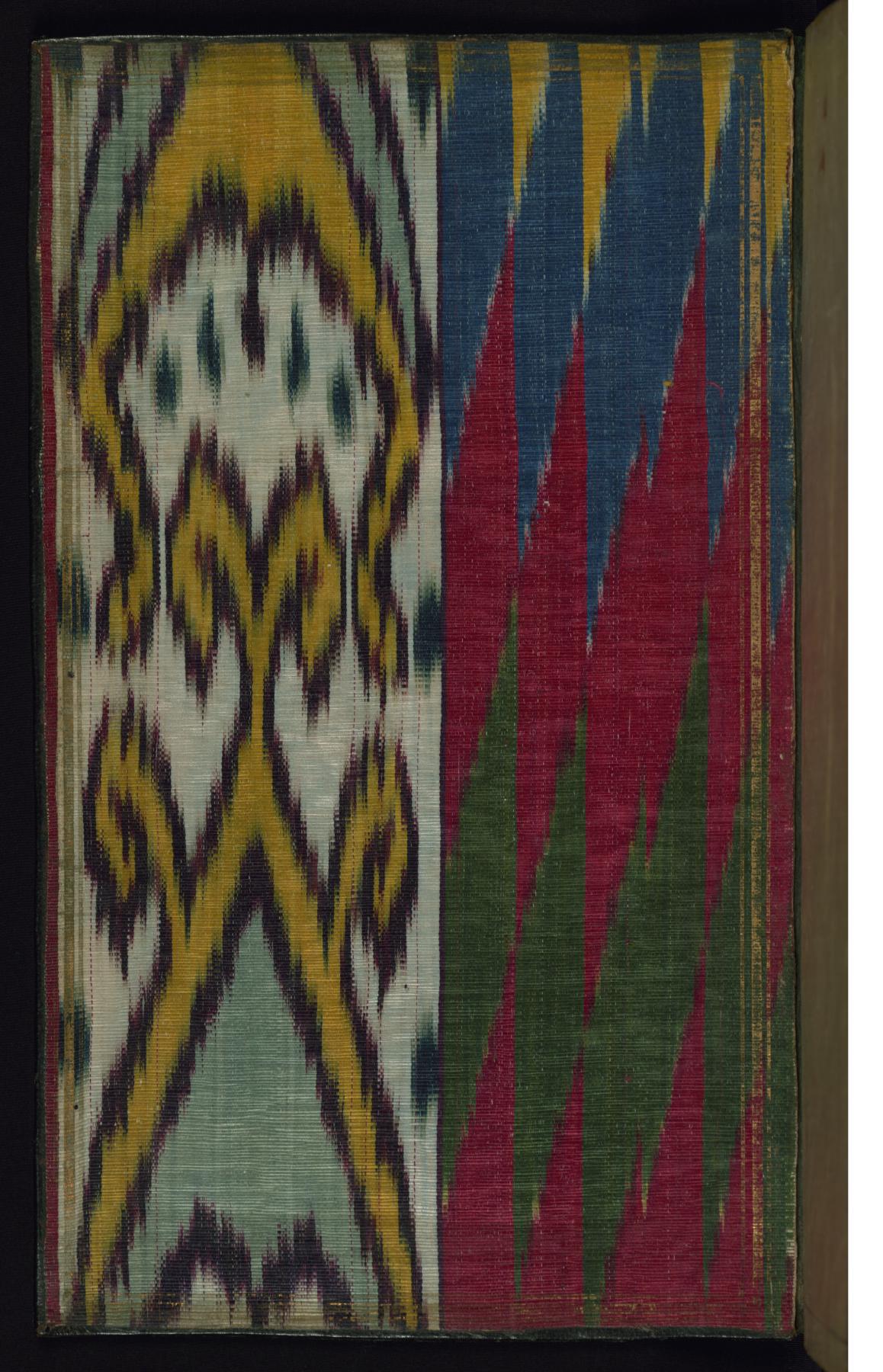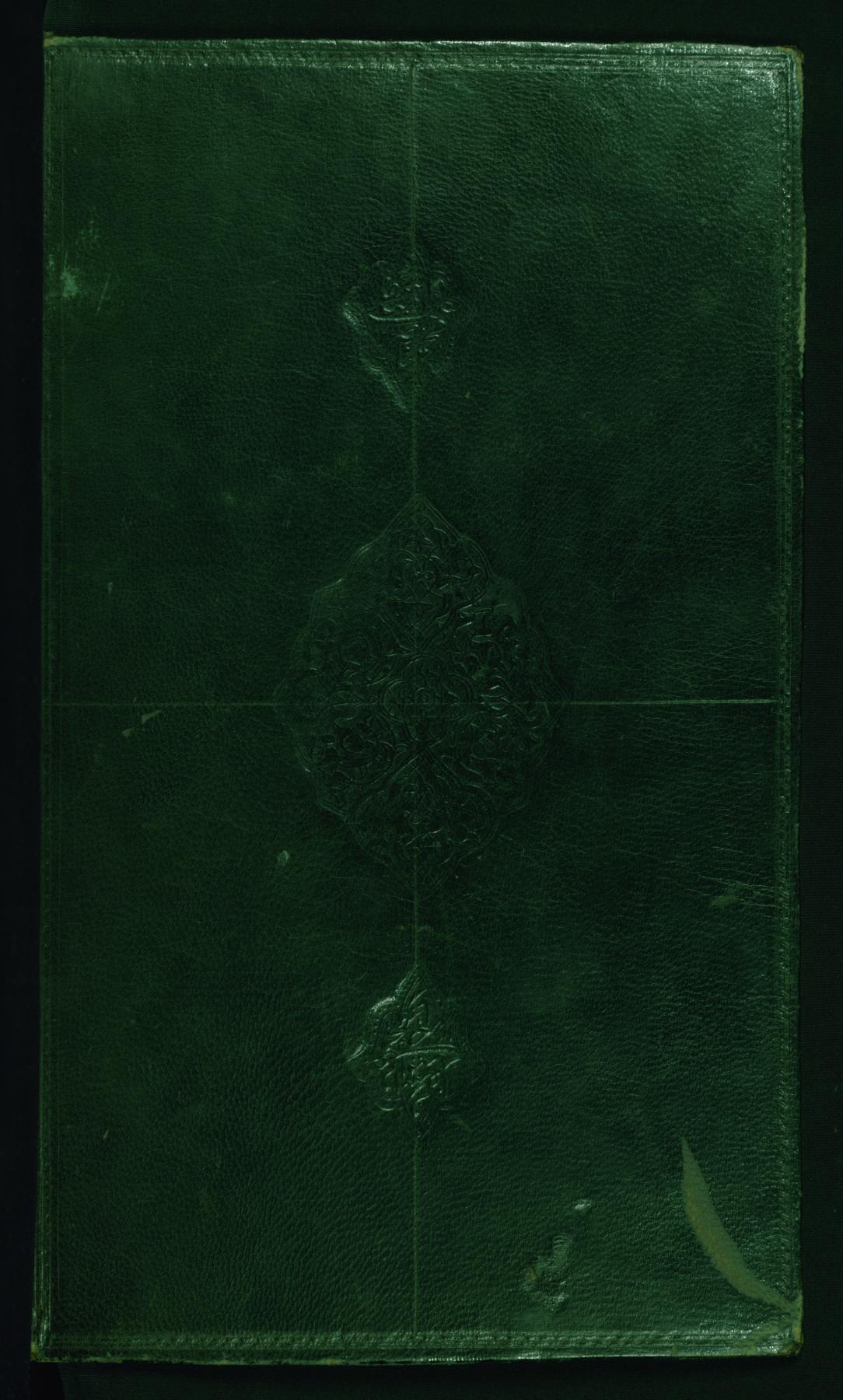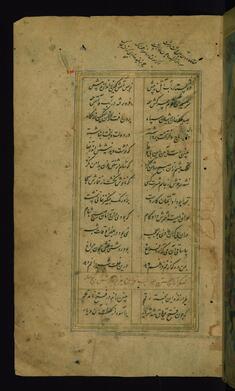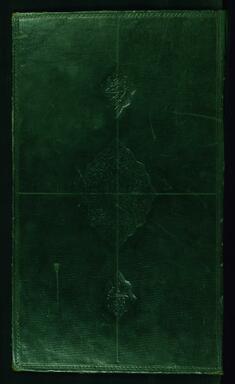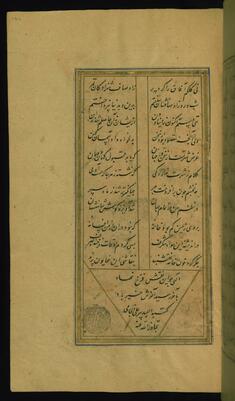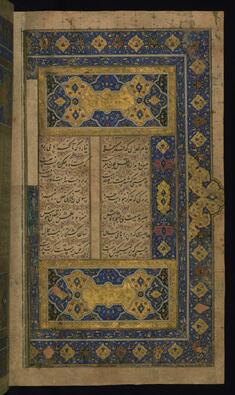Epic of Timur
(Islamic World , Manuscripts and Rare Books, Islamic Manuscripts)
Walters manuscript W.648 is a Safavid illuminated and illustrated copy of the History of Timur (Tamerlane) (reigned 706 AH/AD 1370-807 AH/AD 1405), known as Timurnamah or Zafarnamah, composed by 'Abd Allah Hatifi (died 927 AH/AD 1520) and written in imitation of Nizami's Iskandarnamah. It was copied by Pir 'Ali al-Jami in the 10th century AH/AD 16th. The manuscript opens with a double-page illuminated frontispiece (fols. 4b-5a) and is illustrated with 2 paintings (fols. 37a and 75b). One painting depicts Timur at court and the other portrays Timur defeating the Khan of the Kipchaqs. The green leather binding with inner boards lined with ikat textile is attributable to the13th century AH/AD 19th.
Provenance
Provenance (from the French provenir, 'to come from/forth') is the chronology of the ownership, custody, or location of a historical object. Learn more about provenance at the Walters.
al-'abd Yar … (?) ibn Aq Muhammad, 1019 AH/AD 1610-1611 [mode of acquisition unknown] [seal impression on fol. 166a]; Anonymous owner, Rajab 1269 AH/AD 1853 [mode of acquisition unknown] [seal impression on fol. 4a]; Henry Walters, Baltimore [date and mode of acquisition unknown]; Walters Art Museum, 1931, by bequest.
Exhibitions
| 1988-1989 | The Royal Style. The Walters Art Gallery, Baltimore. |
| 1984-1985 | Illuminated Manuscripts: Masterpieces in Miniature. The Walters Art Gallery, Baltimore. |
Geographies
Iran (Place of Origin)
Measurements
Folio H: 9 1/4 x W: 5 1/2 in. (23.5 x 14 cm)
Credit Line
Acquired by Henry Walters
Location in Museum
Not on view
Accession Number
In libraries, galleries, museums, and archives, an accession number is a unique identifier assigned to each object in the collection.
In libraries, galleries, museums, and archives, an accession number is a unique identifier assigned to each object in the collection.
W.648
Do you have additional information?
Related Objects




